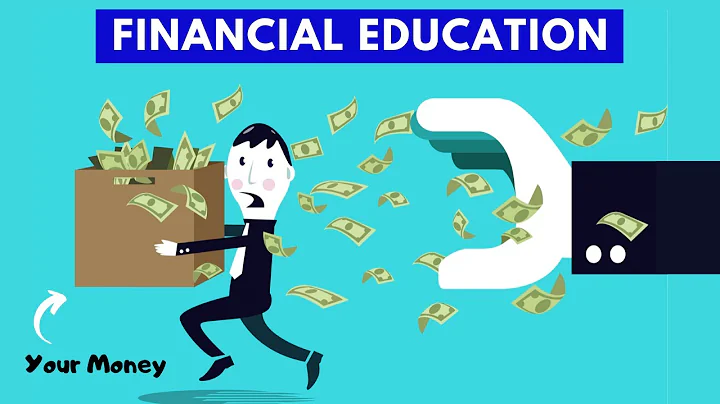What are some interesting facts about financial literacy?
Financial literacy is having a basic grasp of money matters and its four fundamental pillars: debt, budgeting, saving, and investing.
Financial literacy is having a basic grasp of money matters and its four fundamental pillars: debt, budgeting, saving, and investing.
- An Up-to-Date Budget. Some tend to look at the word “budget” as tantamount to the word “diet,” but at its most basic, a budget is just a spending plan. ...
- Dedicated Savings (and Saving to Spend) ...
- ID Theft Prevention.
A strong foundation of financial literacy can help support various life goals, such as saving for education or retirement, using debt responsibly, and running a business. Key aspects of financial literacy include knowing how to create a budget, plan for retirement, manage debt, and track personal spending.
- How much money should you put into savings every month? ...
- What are the 5 factors that add up to make your credit score? ...
- What's the most income you should use on monthly credit card payments? ...
- What's the maximum debt-to-income ratio you should have to maintain financial stability?
“Financial freedom is available to those who learn about it and work for it.” — Robert Kiyosaki. With Good Good Piggy, children can develop financial literacy and take active steps towards achieving long-term financial freedom.
The 50-30-20 rule recommends putting 50% of your money toward needs, 30% toward wants, and 20% toward savings. The savings category also includes money you will need to realize your future goals.
1. Budget your money. In general, there are four main uses for money: spending, saving, investing and giving away. Finding the right balance among these four categories is essential, and a budget can be a very useful tool to help you accomplish this.
Financial literacy is the ability to understand and make use of a variety of financial skills, including personal financial management, budgeting, and investing.
These skills include the ability to effectively locate, evaluate, and use information, resources, and services and to make informed decisions about financial obligations, budgeting, credit, debt, and planning for the future. This video shows the components for teaching a financial literacy lesson.
How can I achieve financial literacy?
- Subscribe to financial newsletters. For free financial news in your inbox, try subscribing to financial newsletters from trusted sources. ...
- Listen to financial podcasts. ...
- Read personal finance books. ...
- Use social media. ...
- Keep a budget. ...
- Talk to a financial professional.
Financial literacy focuses on the ability to manage personal finance effectively, which requires experience of making appropriate personal finance choices, such as savings, insurance, real estate, college payments, budgeting, retirement and tax planning.

Higher debt and bankruptcy rates for people with limited financial knowledge who are more likely to make poor borrowing decisions. Again, higher bankruptcy rates and loan defaults can not only affect individuals but have negative effects on the financial system.
Five common money personalities are investors, savers, big spenders, debtors, and shoppers. Debtors and shoppers may tend to spend more money than is advisable. Investors and savers may overlap in personality traits when it comes to managing household money.
Key short-term goals include setting a budget, reducing debt, and starting an emergency fund. Medium-term goals should include key insurance policies, while long-term goals need to be focused on retirement.
According to the first, there are three main factors: Extraversion, Neuroticism and Psychoticism, whereas the Big Five theory claims that five factors are needed to account for most of the variance in the field of personality: Extraversion, Neuroticism, Agreeableness, Conscientiousness and Openness to Experience.
Financial literacy is about understanding concepts like budgeting, building and improving credit, saving, borrowing and repaying debt, and investing—and having the ability to apply them to real-life situations. If financial well-being is the goal, financial literacy can be the first step toward achieving it.
- Basics of Financial Planning.
- Investment Planning.
- Retirement Savings and Income Planning.
- Tax and Estate Planning.
- Risk Management & Insurance Planning.
- Psychology of Financial Planning.
Some high school students, most of them aged 14-18, are not interested in learning about retirement funds. They don't care about managing debt, or budgeting or saving. Derderian's solution is to start students on their path toward financial literacy much sooner than high school.
Spend less than you earn
This Golden Rule falls under the 50/30/20 budget. This is when 50% percent of your after-tax income goes toward needs; 30% toward wants; and 20% toward savings or debt repayment. This is a simple, excellent way to budget your money.
Does financial literacy matter?
Financial literacy enables individuals to make informed decisions, manage resources, and contribute to economic growth. On the contrary, financial ignorance perpetuates egregious levels of poverty and inequality. It limits access to opportunities, traps people in debt, and widens wealth disparities between countries.”
Are you approaching 30? How much money do you have saved? According to CNN Money, someone between the ages of 25 and 30, who makes around $40,000 a year, should have at least $4,000 saved.
- 50% for mandatory expenses = $2,000 (0.50 X 4,000 = $2,000)
- 30% for wants and discretionary spending = $1,200 (0.30 X 4,000 = $1,200)
- 20% for savings and debt repayment = $800 (0.20 X 4,000 = $800)
This iteration calls for you to put 75% of after-tax income to daily expenses, 15% to investing and 10% to savings.
“Financial literacy” as a construct was first championed by the Jump$tart Coalition for Personal Financial Literacy in its inaugural 1997 study Jump$tart Survey of Financial Literacy Among High School Students.